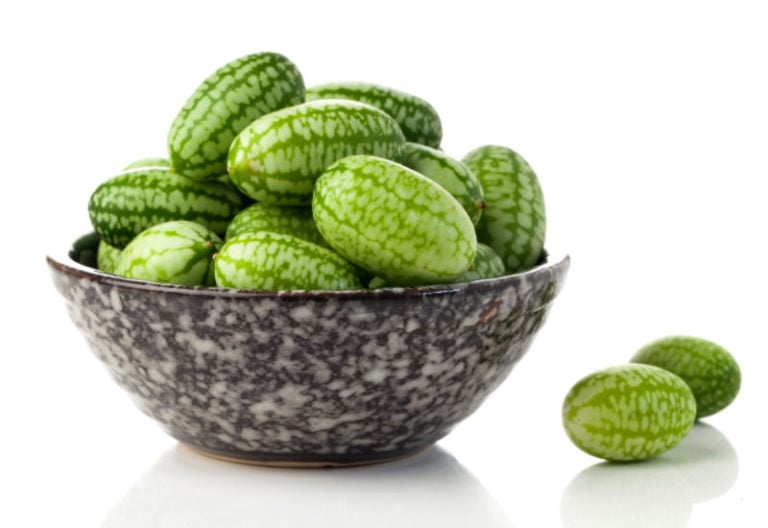Unlocking the Flavor of the Exotic Cucamelon
Discovering the Unique Taste Profile
The cucamelon, a lesser-known fruit native to Mexico and Central America, has been gaining popularity in recent years. Its unique taste profile, which is a combination of sweet and tangy, with hints of citrus and cucumber, has sparked curiosity among food enthusiasts and chefs alike. Many people wonder, what does a cucamelon taste like? The answer lies in its complex flavor combination, which sets it apart from other fruits. As its popularity continues to grow, it’s essential to understand the characteristics that make it a sought-after ingredient in many modern recipes.
How to Experience the Full Flavor Potential
To unlock the full flavor potential of cucamelons, it’s essential to prepare them correctly. Start by gently washing the fruit to remove any dirt or debris. Then, slice the cucamelons into thin rounds or wedges, depending on the desired texture. For a refreshing snack, serve sliced cucamelons with a sprinkle of salt and a squeeze of lime juice. To bring out their natural sweetness, try pairing them with creamy cheeses, such as brie or feta, or with sweet ingredients like honey or mint. By following these simple preparation tips, you’ll be able to experience the unique flavor profile of cucamelons and discover why they’re becoming a favorite among foodies and chefs.
A Symphony of Flavors: Cucamelon Pairing Ideas
Cucamelons are a versatile ingredient that can be used in a variety of dishes, from refreshing salads to satisfying sandwiches and snacks. Their unique flavor profile, which is both sweet and tangy, makes them an excellent pairing with a range of herbs, spices, and other ingredients. For a light and refreshing salad, combine sliced cucamelons with mint, basil, and a drizzle of balsamic glaze. Alternatively, add them to a sandwich for a burst of flavor and texture, pairing them with creamy avocado, crispy bacon, and a sprinkle of red pepper flakes. As a snack, cucamelons can be paired with hummus, salsa, or guacamole for a flavorful and healthy treat. With their adaptability and unique taste, cucamelons are an exciting ingredient to experiment with, and their potential pairings are endless. So, what does a cucamelon taste like when paired with other ingredients? The answer lies in its ability to elevate and complement a wide range of flavors.
The Cucamelon’s Sweet and Sour Side
The cucamelon’s unique flavor profile is characterized by a delicate balance of sweet and sour notes. On one hand, the fruit’s sweetness is reminiscent of a ripe kiwi, with hints of tropical fruitiness. On the other hand, its tangy, sour aspect is similar to that of a pineapple, leaving a refreshing and invigorating sensation on the palate. This sweet and sour duality makes cucamelons an exciting ingredient to work with, as they can add depth and complexity to a wide range of dishes. When asking what does a cucamelon taste like, the answer lies in its ability to balance these opposing flavor profiles, creating a truly unique and captivating taste experience. By understanding the sweet and sour aspects of the cucamelon’s flavor, cooks and food enthusiasts can unlock new possibilities for using this exotic fruit in their recipes.
What Do Chefs and Foodies Say?
Chefs, food bloggers, and influencers who have had the opportunity to try cucamelons are raving about their unique flavor and versatility. “Cucamelons are a game-changer in the culinary world,” says Chef Maria, a renowned culinary expert. “Their sweet and tangy flavor adds a new dimension to salads, sandwiches, and snacks.” Food blogger, Emma, agrees, “I was blown away by the complexity of the cucamelon’s flavor profile. It’s like a symphony of sweet and sour notes on the palate.” When asked what does a cucamelon taste like, many chefs and foodies describe it as a refreshing and exciting twist on traditional cucumbers. “Cucamelons are like a cucumber on steroids,” says influencer, Jack. “They have a more intense flavor and a satisfying crunch that’s hard to resist.” With such glowing reviews, it’s no wonder cucamelons are becoming a staple in many professional kitchens and home cooking experiments.
Cucamelon vs. Cucumber: A Taste Comparison
While cucamelons and cucumbers share some similarities, they have distinct differences in terms of taste, texture, and overall flavor profile. Cucumbers are known for their refreshing, cool flavor and high water content, making them a popular addition to salads and sandwiches. Cucamelons, on the other hand, have a more complex flavor profile, with notes of sweet and tangy, and a slightly crunchy texture. When asking what does a cucamelon taste like, it’s clear that it’s a more intense and exciting flavor experience than its cucumber counterpart. While both fruits are refreshing and perfect for hot summer days, cucamelons offer a more dynamic taste experience, making them a great choice for those looking to add some excitement to their meals. In terms of texture, cucamelons are generally smaller and more rounded than cucumbers, with a thinner, edible skin that adds to their unique flavor and aroma.
Exploring the Cultural Significance of Cucamelons
In their native Mexico, cucamelons have been a staple in traditional cuisine for centuries. Known as “sanditas” or “Mexican sour gherkins,” they are often pickled or used in salsas and salads. In other parts of the world, such as Central and South America, cucamelons are also a popular ingredient in local dishes. They are often paired with chili peppers, onions, and cilantro to add a burst of flavor to meals. The cultural significance of cucamelons extends beyond their culinary uses, as they are also believed to have medicinal properties in some traditional medicine practices. In recent years, cucamelons have gained popularity in modern cuisine, with chefs and foodies around the world experimenting with new recipes and preparations. As their popularity grows, it’s clear that cucamelons are more than just a unique ingredient – they are a window into the rich cultural heritage of their native regions. Whether you’re looking to explore new flavors or connect with traditional cuisine, cucamelons are an exciting and delicious way to do so. So, what does a cucamelon taste like? With their sweet and tangy flavor, it’s no wonder they’re becoming a staple in kitchens around the world.
A New World of Flavor Awaits
With their unique flavor profile and versatility in various dishes, cucamelons are an exciting addition to any meal. Whether you’re a seasoned foodie or just looking to try something new, cucamelons are sure to delight. So, what does a cucamelon taste like? With their sweet and tangy flavor, hints of citrus and cucumber, and crunchy texture, it’s no wonder they’re becoming a staple in kitchens around the world. To fully appreciate the flavor of cucamelons, experiment with different recipes and preparations, such as pickling, slicing, or using them in salsas and salads. Don’t be afraid to get creative and pair them with your favorite herbs, spices, and ingredients. With their growing popularity, it’s clear that cucamelons are more than just a novelty ingredient – they’re a key to unlocking a new world of flavor. So, go ahead and give cucamelons a try. Your taste buds will thank you!








